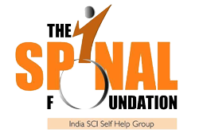Menu
A Spinal Cord Injury is as an impairment of the spinal cord that leads to multiple physical challenges / disabilities. Spinal Cord Impairment refers to abnormality in one or more of the following body functions – sensory, motor, bladder-bowel, respiratory, sexual, hemodynamic stability and temperature control.
The degree of abnormality could range from mild reduction to complete absence of functions, depending on the severity of impairment.
Spinal Cord Impairment may be due to any cause, including, but not limited to, traumatic injury or non-traumatic causes.
- Traumatic causes could be road / train accidents, fall from heights, bullet wounds, construction / factory site accidents, defective surgical processes and sports injuries, to name a few.
- Non-traumatic causes include congenital defects, Spina Bifida, TB of spine, meningo mylocele, brain fever, Transverse Myelitis, tumours, infection, other diseases and any other condition that leads to effects similar to paraplegia and tetraplegia (also referred as quadriplegia).
Facts about Spinal Cord Injury
- Currently, there is no treatment for spinal cord injury anywhere in the world.
- Complete recovery is extremely rare. Even in the rare instance, it is an act of nature than of any medical process.
- Surgery after an injury does not lead to neurological recovery.
- Alternative treatments do not serve any purpose from a recovery viewpoint and the money spent could be better used to help the person go ahead in life.
- Harnessing physical capabilities that are intact through proper rehabilitation training is the best way out to going ahead in life.
- If hand functions are not impacted, a complete independent life is possible from the wheelchair.
- If the injury level is T10 or below, there is a good possibility of walking with the aid of assistive devices.
- Without assessment by an experienced therapist, do not rush to buy a wheelchair.
- Pressure ulcers or bedsores are the most dangerous enemies for a person with spinal cord injury as they impact sitting, standing, walking and functional activity.

 by
by